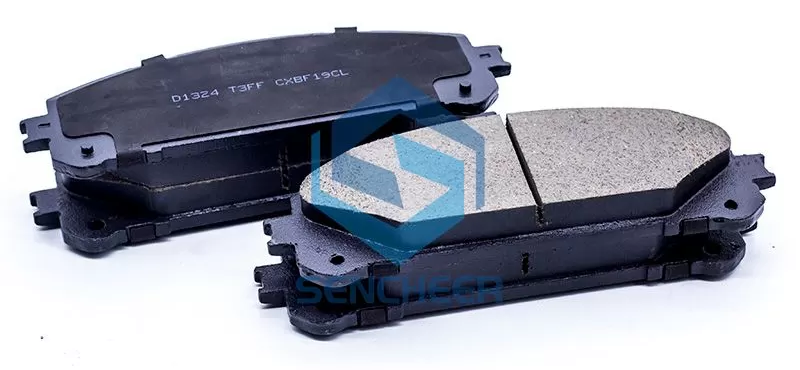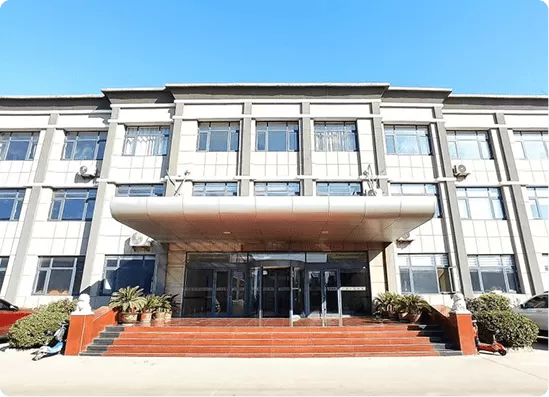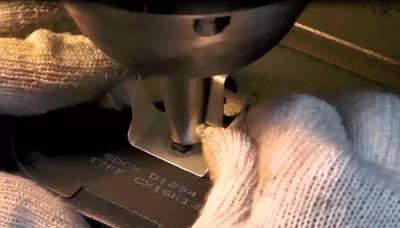+86 153 7870 3202
+86 153 7870 3202
SENCHEER BRAKE offers top-quality ceramic brake pads engineered for passenger vehicles, ensuring quiet and reliable braking. Our brake pads provide superior stopping power, longer lifespan, and low dust emissions, enhancing your driving experience and vehicle safety.
DESCRIPTION
Experience the next level of braking performance with SENCHEER BRAKE's premium ceramic brake pads. Specifically designed for passenger vehicles, our brake pads deliver exceptional stopping power while minimizing noise and dust. Manufactured using advanced ceramic materials, they provide a smooth and quiet ride, ensuring a safe and comfortable driving experience.
Crafted from high-grade ceramic materials, SENCHEER BRAKE pads are built to withstand extreme conditions. The superior material composition ensures reduced wear and tear, resulting in an extended product lifespan. These brake pads are also designed to handle high temperatures, preventing brake fade and maintaining optimal performance throughout their usage.
Say goodbye to noisy and dusty braking with our ceramic brake pads. SENCHEER BRAKE pads are engineered to minimize noise, vibration, and harshness (NVH) levels, providing a quiet and comfortable ride. The low-dust formula helps keep your wheels cleaner, reducing maintenance efforts while preserving the aesthetic of your vehicle.
Safety is at the core of SENCHEER BRAKE's product design. Our ceramic brake pads ensure consistent braking performance, offering superior stopping power and shorter braking distances. With a focus on quality and precision, these brake pads meet rigorous safety standards, making them an ideal choice for daily driving and demanding road conditions.
SENCHEER BRAKE's ceramic brake pads are designed for easy installation and compatibility with a wide range of passenger vehicles. Whether you are a car enthusiast or a professional mechanic, you will appreciate the straightforward installation process that gets you back on the road quickly and safely.

Product Advantages
Exceptional Stopping Power
SENCHEER BRAKE's ceramic brake pads are designed to provide superior braking performance. They ensure reliable and consistent stopping power, enhancing vehicle safety across various driving conditions, including wet or dry roads.
Quiet Braking Experience
Engineered with advanced ceramic materials, these brake pads significantly reduce noise, vibration, and harshness (NVH). This results in a smoother, quieter braking experience, improving overall driving comfort.
Low Dust Emissions
Unlike traditional brake pads, SENCHEER BRAKE ceramic pads produce minimal brake dust. This keeps your wheels cleaner, reduces maintenance, and preserves the aesthetic appearance of your vehicle, especially important for premium passenger cars.
Durable and Long-Lasting
Made from high-quality ceramic compounds, these brake pads are built to withstand extreme conditions. Their durable design extends the lifespan of the brake pads, offering long-term reliability and reducing the need for frequent replacements.
High-Temperature Resistance
SENCHEER BRAKE ceramic brake pads can handle high-temperature conditions without losing efficiency. This high resistance prevents brake fade, ensuring optimal braking performance even during intense or prolonged use.
Consistent Performance
These brake pads provide stable friction performance across a wide range of temperatures and speeds, ensuring smooth and predictable braking in daily driving and high-demand situations.
Easy Installation and Compatibility
Designed for a wide range of passenger vehicles, SENCHEER BRAKE ceramic pads are easy to install, making them suitable for both professional mechanics and car enthusiasts. Their compatibility with various car models streamlines the replacement process.
Enhanced Safety Standards
SENCHEER BRAKE ceramic brake pads meet rigorous safety standards and have undergone extensive testing to ensure their reliability. This makes them a trustworthy choice for drivers prioritizing safety and quality.
Eco-Friendly Composition
Constructed with environmentally friendly materials, these brake pads have reduced environmental impact compared to traditional braking systems. The low-dust formula not only benefits vehicle aesthetics but also contributes to a cleaner environment.
About us
Founded on a commitment to safety and quality, SENCHEER BRAKE has grown into a trusted name in the automotive brake industry. With a focus on producing premium brake pads for passenger vehicles, we have dedicated ourselves to delivering reliable, high-performance products that drivers can depend on.

Our Story: A Journey of Safety and Innovation
The story of SENCHEER BRAKE began with a simple yet ambitious goal: to provide high-quality brake pads that enhance vehicle safety and performance. Our founders, driven by a passion for automotive technology, saw a need in the market for advanced brake pads designed specifically for passenger cars. Combining their extensive expertise in automotive engineering, they set out to create a brand that would prioritize quality, durability, and safety above all else.
From humble beginnings, we invested in state-of-the-art manufacturing facilities and a team of skilled engineers dedicated to pushing the boundaries of brake pad technology. Today, our products are recognized for their exceptional stopping power, quiet operation, and long-lasting performance, making SENCHEER BRAKE a preferred choice for drivers worldwide.

Our Expertise: Crafting High-Quality Brake Pads for Passenger Cars
At SENCHEER BRAKE, we specialize in producing brake pads tailored for passenger vehicles. We utilize premium materials and advanced manufacturing techniques to ensure our brake pads meet the highest industry standards. Each product undergoes rigorous quality control, ensuring optimal braking performance and durability across various driving conditions.
Customer-Centric Approach
We believe that every driver deserves the best braking experience. Our team works closely with clients to understand their unique needs, offering tailored solutions and comprehensive support. Our dedication to customer satisfaction extends beyond product delivery, as we continue to provide expert guidance and after-sales service.
Innovating for a Safer Future
As the automotive world evolves, SENCHEER BRAKE remains at the forefront of innovation. We are constantly exploring new materials and technologies to enhance our brake pads' performance, making driving safer and more enjoyable. Our mission is to continue building a brand synonymous with quality, reliability, and safety.
TAGS
Custom Service
For the past 15 years, Sencheer is supplying the global market with custom brake pads using OE technology. Our customization range is wide and free, which covers logo, label, brand box, carton design, spraying code etc.
Contact Number
+86 153 7870 3202
Navigation
+86 153 7870 3202
Songjia Town Development Zone, Lingcheng District, Dezhou City, Shandong, China